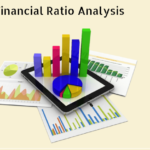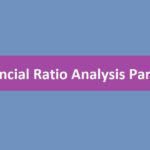What is Company’s Annual Report?
Every company publishes an annual report once a year and sends it to its shareholders and others. The annual report is published at the end of a financial year and every data given in it is as on 31st March. The Annual Report is available on the company’s website as a PDF document in the Investor section and can be downloaded. You can contact the company to get the annual report book.
Since the information given in the annual report is given by the company, it can be considered as official information, and hence the company is held responsible if any mistake is found in it. It is important to mention here for your information that the financial data given in the annual report of the company is certified by the auditor of the company.
The annual report of the company is published exclusively for new investors and old shareholders. In this, necessary information is given for the investor. In addition, it also contains a message from the company. The best source of information about a company for an investor is the company’s annual report. Although many business websites claim to give information about the company, but the investor should stay away from them as the information given by the company cannot be trusted much.
You must be wondering why other media websites will give wrong information? They may not be giving this information intentionally wrong, but there may be other reasons for this, for example, companies show depreciation on the expense side of their profit and loss statement, but media websites show this. Can be shown inside any other head, this will not have any direct effect on the financial statement of the company, but will change the way of looking at it.
What should be looked for in the annual report?
Different parts of the annual report contain a lot of information that reveals about the company. It should be read very carefully because sometimes the company gives such information which is kept for marketing whereas you should keep an eye on the facts.
Let’s look at the different parts of the annual report and try to see what the company says in it. For your understanding, we have taken here the Annual Report of Amara Raja Batteries Limited for 2013-2014. As you know, Amara Raja Batteries manufactures batteries for the Auto Sector and Industrial Sector. You can download the Amara Raja Batteries FY 2014 Annual Report here. (http://www.amaraja.co.in/annual_reports)
Remember that the main purpose of this chapter is to show you how to read the Annual Report. Therefore, it is not necessary to read every page of the annual report here and it will not be the right way, but we will definitely try to tell you here how to read this report? Which information to use and which information to discard?
To understand better, it is better that you download this Annual Report of Amara Raja Batteries and try to read it along with us in this chapter.
The Amara Raja Batteries Annual Report consists of 9 parts:
- Summary of Financial Data
- statement of management
- Management discussion and review
- 10-year financial highlights
- Company Information
- director’s report
- Report on Corporate Governance
- financial part
- notice
Keep in mind here that no two reports are of the same type. Each report is slightly modified to suit the needs of the company and sometimes even the industry. But some parts in the annual report are usually the same.
The first part in the annual report of Amara Raja Battery (ARBL) is Financial Highlights. In financial highlights, the company gives a brief account of its operations for the last 1 year. This part is usually shown through a graph or table. This part also compares the past several years of the company’s operations.
The financial highlights look something like this:
All figures you see in this section of Financial Highlights are derived from company financial statements. Apart from this, the company can also put some financial ratios here which are calculated by the company itself. I take a look at it and don’t spend too much time on it. I do this because I calculate these ratios myself. By doing this, I get an accurate assessment of the company’s performance. In the next few chapters, we will try to understand how the financial statements of the company are read and the financial ratios are worked out.
It is followed by two parts – Management Statement and Management Discussion and Analysis. Both of these are very important. I spend a lot of time reading these two. Here you get to know what the company thinks and has to say about its operations and about the industry. Everything said here is important to you as an investor. Especially the things we talked about in Chapter 2 about the quality of the company.
The part of the Management Statement (also known as the Chairman’s Message) gives an investor an overview of what the company’s top executives are thinking about their business. This is very basic information, but it tells where the company’s business is located and where it can go. When I read this, I try to see how logical and reasonable is the company’s statement? Here it also comes to know whether the company has the correct information about the situation in the industry or not? Does the company understand this business properly or not? Apart from this, I also see how honest the company is in reporting the mistakes that the company has made or the things that it has done right.
Here I am reminded of a message from the chairman of a well-known tea company, which I read in his annual report. In that message, the chairman had said that the company’s earnings would grow at a rate of 10%, but all his previous data showed that the company’s earnings had never been more than 45%, so earnings would grow at 10%. To claim, was an air claim. It was clear that the top executives of the company were not aware of the exact market situation. So I decided not to invest in that company. Later, when I reviewed my decision, I felt that my decision was right.
Now take a look at the management’s message on the Annual Report of Amara Raja Batteries Limited below. I have highlighted one part which I find very interesting. You read this entire message:
After this the next part comes that of Management Discussion and Analysis i.e. discussion and review of management. According to me, this is the most important part of the annual report. Usually, companies start this part with the current state of the economy. She tells how is the economic business going on in the country, how is the business environment and in what way are the companies thinking? If the company’s business is related to export, then companies sometimes also discuss the world economy and business environment.
Since the operations of ARBL are linked to domestic market as well as exports, the company has discussed both these approaches in its annual report. Please see the picture below:
 Comment of ARBL on Indian Economy:
Comment of ARBL on Indian Economy:
After this, the company usually discusses the trends of the industry and tries to tell how the future looks for the company. Here we get to know what opportunities and threats the company sees in the coming times. I read it very carefully and then compare it with other companies competing with the company. This gives me an idea of whether the company is stronger or weaker than its competitors.
For example, if I have or want to invest in Amara Raja Batteries, then I will read this part carefully and compare the two as well by reading the same section in the Annual Report of Exide Batteries Ltd.
Till this part of the Annual Report i.e. Management Discussion and Analysis part, the company is giving a broad view. After this the company talks about its business. It gives an overview of how the business is doing, what the different parts are doing for the company, how they are doing compared to last year. The company also gives statistics in this part.
Take a look:
 Some companies also discuss here strategy and guidelines for the coming year for their different segments. Take a look below:
Some companies also discuss here strategy and guidelines for the coming year for their different segments. Take a look below:
After the discussion and review of the company, there are many more minor reports in the annual report, such as Human resource report, Research and development report, Technology report etc. All these reports are important in terms of the industry in which the company operates. For example, if I am reading the annual report of a manufacturing company, then in human resource report I will get to know whether there is any labor problem in the company. If there is any such problem then it can shut down the company’s factory and it will not be good news for the investors of the company.
Financial Statements
The last part of the annual report is the financial statement of the company. You probably understand that the financial statement is the most important part of the annual report. There are three parts to the financial statement.
The profit and loss statement
The Balance Sheet
The Cash flow statement
We will understand these three in detail in the next few studies but it is important to know here that financial statements are presented in two ways.
Standalone Financial Statement or Standalone Financial Statement
Consolidated financial statement
To understand the difference between standalone figures and consolidated figures, we need to understand the structure of the company.
A good and large company can have many small subsidiaries or divisions. Sometimes companies also act as holding companies of other companies. To explain this properly, let me look at the shareholding structure of CRISIL Limited. You will also find this in the annual report of CRISIL. Perhaps you are aware that CRISIL is an Indian company that is in the business of giving credit ratings to other companies.
As you can see above in the shareholding pattern:
US-based credit rating company Standard and Poor’s (S&P) holds 51% of CRISIL’s shares. So here S&P is a holding company or promoter.
- The remaining 49% is held by public or other financial institutions.
- But S&P itself is a 100% subsidiary of another company, McGraw-Hill Companies.
- This means that McGraw-Hill owns S&P and S&P holds 51% of Crisil’s
- CRISIL itself is the owner of a company Irevna (holds 100% stake)
Now let us assume a situation based on the given information. Suppose CRISIL made a loss of 1000 crores in the financial year 2014 and its 100% subsidiary Irevana made a profit of 700 crores. Now, what is the total profit of CRISIL?
Very simple CRISIL made a loss of 1000 crores while its subsidy Irvana made 700 crores i.e. CRISIL’s total P&L (-1000 crores) + 700 crores = 300 crores
You have seen that CRISIL’s total loss on account of profit of its company’s subsidiary was only 300 crores while it was incurring a loss of 1000 crores. If you look at this on a standalone basis, CRISIL suffered a loss of 1000 crores while on a consolidated basis CRISIL’s loss was only 300 crores.
This means that only the company’s own results are shown in this standalone financial statement. It does not contain its subsidy figures, whereas the consolidated statement shows all the results of the company, including those of its subsidiaries.
I like to look at the consolidated financial statement of the company as it gives an accurate picture of the overall financial condition of the company.
Schedule / List / Program Table of Financial Statement
When a company gives its financial statement, it initially gives a brief statement and later its full detail is given.
Here you can view the Financial Statement (Balance Sheet) of ARBL:
Each individual piece of information in a financial statement is called a line item. For example, the first line item in the balance sheet (under Equity and Liabilities) is Share Capital (shown with a green arrow). You must be seeing that here a note number has been linked to the share capital, this is called the schedule, which is attached to the financial statement. After looking at the statement of ARBL, the share capital is seen as 17.081 crores. As an investor I would like to know how ARBL calculated 17.081 crores? To find out, I have to look in the Associated Schedule Note No. 2 of the company. See the picture below:
If you are a beginner then you may not understand the meaning of many things in financial statement like share capital. However, financial statements are easy to understand. In the next few chapters we will explain how to understand and read it. Just remember that the financial statement gives you a brief overview while the associated schedule gives you the details.
Highlights of this chapter
- The company issues annual reports to communicate with its investors.
- An annual report is the best source to get information about the company so every investor should read it first.
- The annual report consists of several parts which are talking about different things related to the business.
- Annual reports are a very good source to know about the quality of the company.
- Management discussion and analysis is the most important part of the company’s annual report. In this, the attitude of the management about the country’s economy, how the industry will do and what will be the future – all these things are there. Along with this, it is also told what the company did wrong and what was right.
- The annual report consists of 3 financial statements – profit and loss statement, balance sheet, and cash flow statement.
- Standalone statements show only the company’s financial data, whereas consolidated statements contain data for the company and all its subsidiaries.

Gaurav Heera is a leading stock market educator, offering the best stock market courses in Delhi. With expertise in trading, options, and technical analysis, he provides practical, hands-on training to help students master the markets. His real-world strategies and sessions make him the top choice for aspiring traders and investors.












